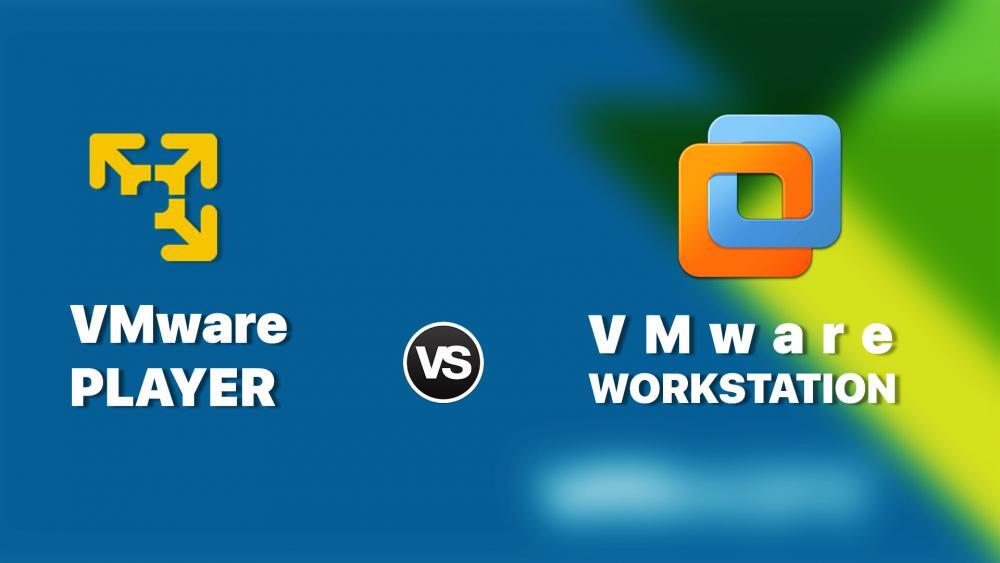In this post, I’ll show you the difference between VMware Workstation and VMware Player. VMware Workstation Pro is a hosted hypervisor that runs on x64 versions of Windows and Linux operating systems. It enables users to set up various virtual machines on a single physical host, and use them simultaneously along with the actual machine. In this article, I’ll make it clear because some users are confused to use VMware Player or Workstation.
VMware Player vs VMware Workstation Quick Overview
According to VMware Inc FAQ, VMware Workstation Player enables you to quickly and easily create and run virtual machines. The Workstation Player user interface is designed to be as easy to use as possible. It is intended for people who need to run virtual machines, typically provided to them by their IT organization, system administrator, instructor, software supplier, etc.
VMware Workstation Pro is much more advanced and comes with powerful features including snapshots, cloning, remote connections to vSphere or vCloud Air, sharing VMs, advanced Virtual Machines settings, and much more. Workstation is designed to be used by technical professionals such as developers, quality assurance engineers, systems engineers, IT administrators, technical support representatives, trainers, and more.
Related: Install macOS Catalina on VMware on Windows
VMware Workstation Player compared VMware Workstation Pro Table
| Description | Workstation Player | Workstation Pro |
| General | ||
| Create New VMs | Yes | Yes |
| Create Large VMs (16CPU, 64GB RAM, 3GB vRAM) | Yes | Yes |
| Over 200 Supported Guest OSs | Yes | Yes |
| Mass Deployment | Yes | Yes |
| Host or Guest Integration | ||
| Host/Guest File Sharing | Yes | Yes |
| Run VMs with Different View Modes | Yes | Yes |
| 3D Graphics with DX10.1 and OpenGL 3.3 Support | Yes | Yes |
| Drag-able Tabbed Interface | No | Yes |
| One-Click SSH to Linux VM | No | Yes |
| Device Support | ||
| 4K Display Support | Yes | Yes |
| Support a Wide Range of Virtual Devices | Yes | Yes |
| USB Smart Card Reader Support | Yes | Yes |
| USB 3.0 Device Support | Yes | Yes |
| Works with Assistive Devices (Section 508 Compliant) | Yes | Yes |
| Multi-Language Keyboard Support | Yes | Yes |
| Security Features | ||
| Microsoft Virtualization Based Security (Guest) Support | Yes | Yes |
| Virtual Trusted Platform Module (vTPM) | Yes | Yes |
| UEFI Boot Support | Yes | Yes |
| UEFI Secure Boot Support | Yes | Yes |
| Create/Manage Encrypted VM | No | Yes |
| Virtual Network Rename | No | Yes |
| Advanced Features | ||
| Run Managed/Restricted Desktop | Yes | Yes |
| REST API Control | Yes | Yes |
| vCenter Server Appliance Effortless Deploy | Yes | Yes |
| Command Line Operation: vmrun | Yes | Yes |
| Snapshots | No | Yes |
| Run Multiple VMs at Once | No | Yes |
| Run Encrypted VM | No | Yes |
| Virtual Network Customization | No | Yes |
| Virtual Network Simulation (packet loss, latency) | No | Yes |
| Virtual Machine Cloning | No | Yes |
| Share Virtual Machine (Workstation Server) | No | Yes |
| Connect to vSphere/ESXi Server | No | Yes |
| Remote vSphere Host Power Control | No | Yes |
If you want to get full details of VMware virtualization, please read VMware’s Post.
Summary
In this article, I’ve shown detailed information about the difference between VMware Workstation and Player. So basically VMware player has a simple user interface that has basic functionalities whereas VMware Workstation Pro has complex UI and has more advanced functionalities. VMware Workstation is used by beginners but VMware Workstation Pro used by Experts such as IT Administrators, developers, system engineers, and more. I hope you enjoyed this post and have learned something useful.



Leave a Reply